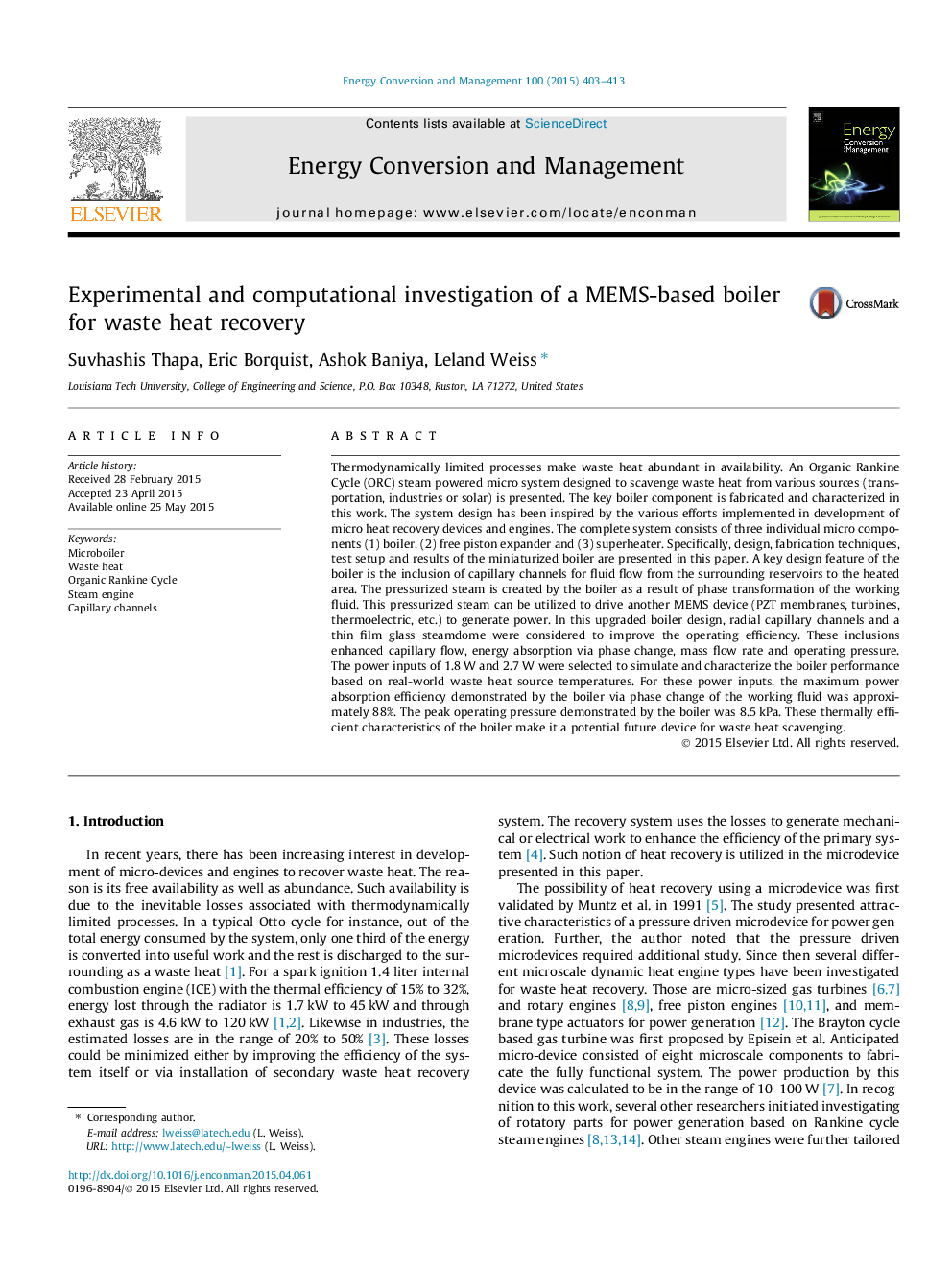| کد مقاله | کد نشریه | سال انتشار | مقاله انگلیسی | نسخه تمام متن |
|---|---|---|---|---|
| 763716 | 1462862 | 2015 | 11 صفحه PDF | دانلود رایگان |

• A microboiler with capillary channels for low temperature energy harvesting.
• Complete thermodynamic analysis is completed.
• The boiler is designed for minimum thermal losses.
• Capability of capillary channels to pump at various pressure is investigated.
Thermodynamically limited processes make waste heat abundant in availability. An Organic Rankine Cycle (ORC) steam powered micro system designed to scavenge waste heat from various sources (transportation, industries or solar) is presented. The key boiler component is fabricated and characterized in this work. The system design has been inspired by the various efforts implemented in development of micro heat recovery devices and engines. The complete system consists of three individual micro components (1) boiler, (2) free piston expander and (3) superheater. Specifically, design, fabrication techniques, test setup and results of the miniaturized boiler are presented in this paper. A key design feature of the boiler is the inclusion of capillary channels for fluid flow from the surrounding reservoirs to the heated area. The pressurized steam is created by the boiler as a result of phase transformation of the working fluid. This pressurized steam can be utilized to drive another MEMS device (PZT membranes, turbines, thermoelectric, etc.) to generate power. In this upgraded boiler design, radial capillary channels and a thin film glass steamdome were considered to improve the operating efficiency. These inclusions enhanced capillary flow, energy absorption via phase change, mass flow rate and operating pressure. The power inputs of 1.8 W and 2.7 W were selected to simulate and characterize the boiler performance based on real-world waste heat source temperatures. For these power inputs, the maximum power absorption efficiency demonstrated by the boiler via phase change of the working fluid was approximately 88%. The peak operating pressure demonstrated by the boiler was 8.5 kPa. These thermally efficient characteristics of the boiler make it a potential future device for waste heat scavenging.
Journal: Energy Conversion and Management - Volume 100, August 2015, Pages 403–413